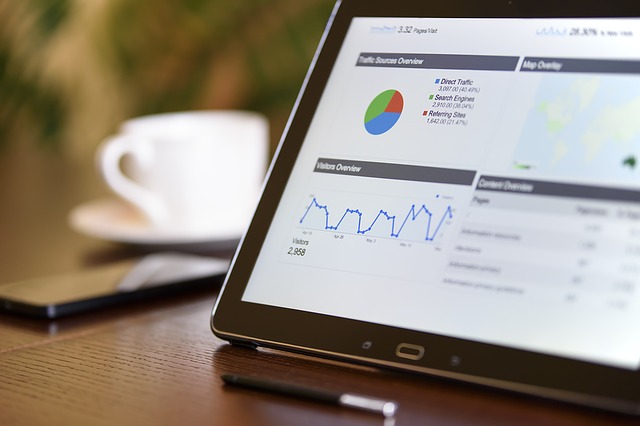The term “Bounce Rate” tends to strike fear in the hearts of budding internet marketers everywhere, but it should be something not feared, but respected.
There are many things to keep in mind when it comes to looking at a bounce rate, as well as ways to adjust how tools like Google Analytics calculates bounce rate for your specific site.
What Does “Bounce Rate” Mean?
A “bounce” is defined as a single visit to your website or page with no engagement or interaction.
We can distinguish between two types of bounce rates:
- Website bounce rate: bounces across all the pages on the website
- Page bounce rate: bounces on a specific website page
There are plenty of valid reasons for a bounce, such as a visitor clicking on your site by mistake, or entering the wrong URL.
It may be for very simple reasons, such as they were looking for something slightly different than the products or services you are offering. But on the other hand, bounces may also happen because your visitors found the exact information they were looking for. Therefore, a bounce rate of zero is completely impossible.
Bounce Rate Formula
The “bounce rate” is calculated by taking the number of bounces divided by the total number of visitor sessions.
BR = (Number of Bounces on Page / Number of Total Visitors on Page) X 100
The typical bounce rate for any given website is usually between 20% and 50%. As you can see, the spread between these figures is large, which means what constitutes a “high” bounce rate can vary, depending on your site and landing page.
Google Analytics includes bounce rate in its calculations to ensure your page is relevant to search terms and visitor needs.
The reasoning behind this is that the longer a visitor interacts with a page, the more likely they are signing up, reviewing pages, and possibly making a purchase.
There are many times this is accurate, but it is possible that a potential customer, pressed for time, simply enters their email address to sign up for more information and leaves quickly. This is why it’s important to drill down into bounce rate data to learn more about what’s happening.
How to Learn More About Bounce Rates
It is an absolute must for any website owner to drill down into bounce rate data to learn more about bounces. While there’s no way to talk to each visitor individually to determine why they left in a hurry, segmenting your bounce rate will help tell a story of who leaves, when, and where.
The best place to look is in the Google Analytics Behavior Reports.
Under the “Audience” option on the toolbar, you’ll find options to learn more about the WHO of your audience and related bounce rates. “Demographics” will show you the age and gender of visitors. “Geo” will show you the location of your audience. “Behavior” rates new versus returning visitors. “Source/Medium” helps you learn where these visitors come from.

All of these details are key in telling you who is coming to your page. Knowing who visits your page frequently will help you deliver key content to that particular demographic.
One of the key tennants of marketing is to “Know your audience.” With the information provided in this segment of Google Analytics, you’ll be armed with those details to ensure your content is relevant. Relevant content means a lower likelihood of a bounce.
Read also: Finding your Target Audience
You can also set up benchmarking in Google Analytics to make sure you’re performing at industry standard.
This feature can be found under “Account Settings” and then “Benchmarking.” Check this box to review industry averages.

You’ll be able to look at your own pages by clicking “Acquisition” then “All Traffic,” followed by “Channels” and “Comparison” to filter bounce rates to see which pages on your site have the highest and lowest bounce rates.
Compare this to the averages to get a feel for how your page is performing against the competition.
Another place to examine is the Top Exit Page report. This report link is located below the Landing Pages Report, and will tell you where on your site people exit.
This will give you the opportunity to place Call To Action boxes at all the right places, as well as examine where content might be lacking.
What Does It All Mean?
Knowing is half the battle, as they say. Now that you know who is reading your page, as well as trends in their departure from your page, it’s time to roll up the sleeves and do some work.
It cannot be said enough that “Content is key.” Make sure the page fits the audience. Make sure the language, pictures, videos, even fonts and colors are relatable to the demographic.
Blog posts and videos are another key component of content. People will stay longer to read posts or watch videos that are meaningful to them, so don’t upload media for the sake of having media: make it topical, entertaining, and relevant.
Would you like to have more ideas to entertain and stick your visitors to your website? Try with implementing these suggestions.
If you’re feeling overwhelmed by all of these moving parts, use the resources available, including A/B Testing to try out a few options, or requesting the assistance of a professional. Internet trends change incredibly quickly, so don’t be afraid to change things up from time to time, based on the findings of your reports.
On Page Checks
Another thing to check is the layout. If visitors are giving up on the landing page, they may be feeling lost from the get-go.
Make sure pages load quickly and completely. Make the path obvious for anyone to follow. Calls to Action should stand out. Your blog should be easy to find and share. Sales pages should be transparent.
Don’t be so focused on style that usability suffers. In most niches, it’s just as simple for a visitor to close out of your site and choose the next one on the search list, so draw in the audience with usability.
You can learn more about this concept in this article.
Adjusting Bounce Rates
It’s also a great idea to make adjustments to the bounce rate calculations in Google Analytics so that they truly reflect your website experience.
For example, you can actually tell Google Analytics how to measure the time a visitor spends on your site before considering it a bounce.
To do this, create a new tag on Google Tag Manager, and name it something like “Bounce Rate Timer.” Since Google Analytics measures the length of time in milliseconds, be careful when adjusting the trigger here.
Name the trigger by the time frame requested, such as 30 seconds. Doing this will ensure that Google will only count a bounce as time spent on your page less than 30 seconds.
Assuming your page is loading correct (which you should always check!), 30 seconds is typically a fair amount of time to look around a page to decide to click further.
Wrapping up
A bounce rate is a tricky thing to nail down, but keeping an eye on bounce rates will help business owners understanding audience actions and visitor expectations.
By reviewing the stats in Google Analytics, it is possible to make adjustments to content and site flow to ensure visitors have the best possible experience on your site.
The more time they spend on your site, the more likely they are to become invested in interacting with you and your products and services.
That interaction can lead to a conversion, a lifetime customer, a recommendation, and beyond!









